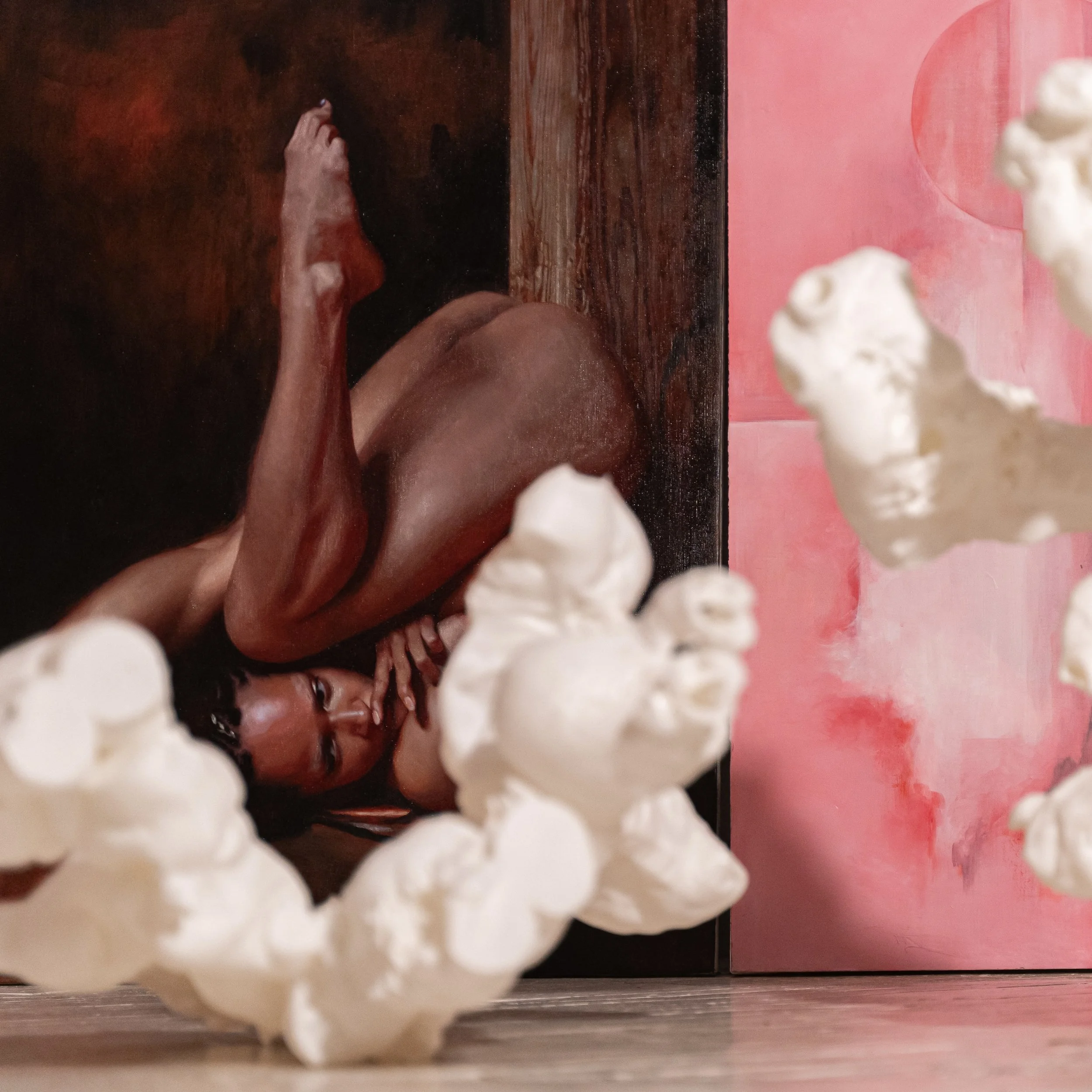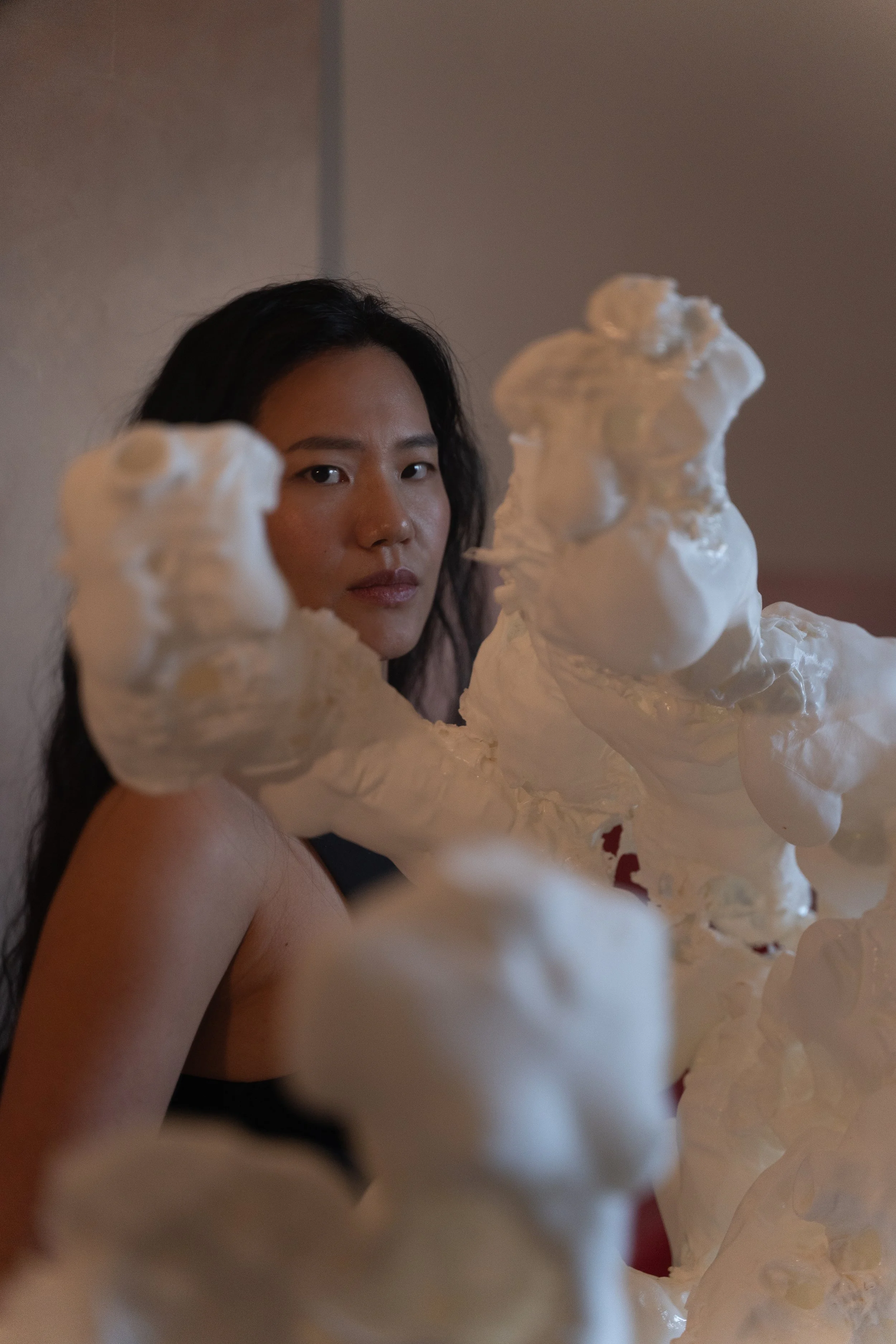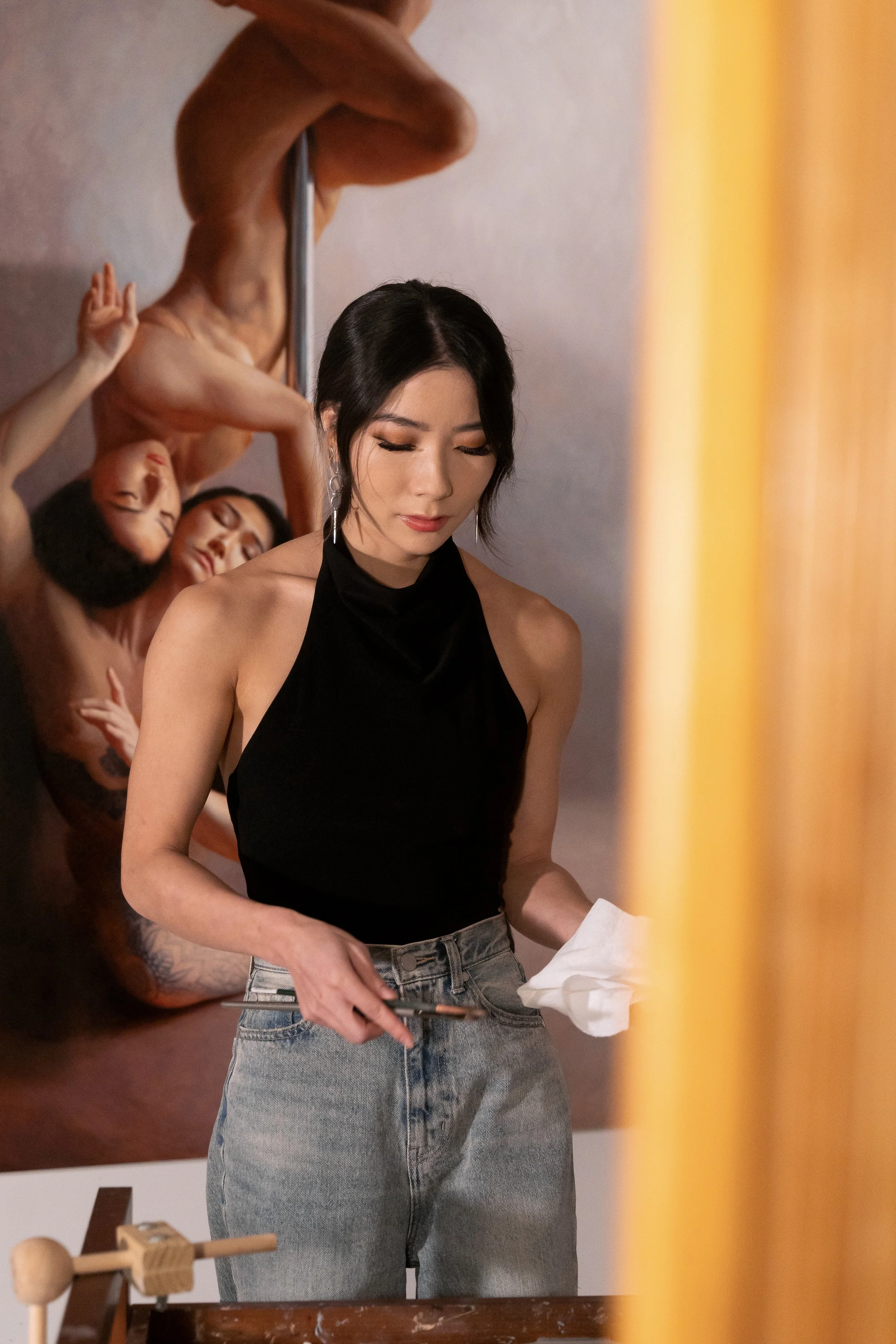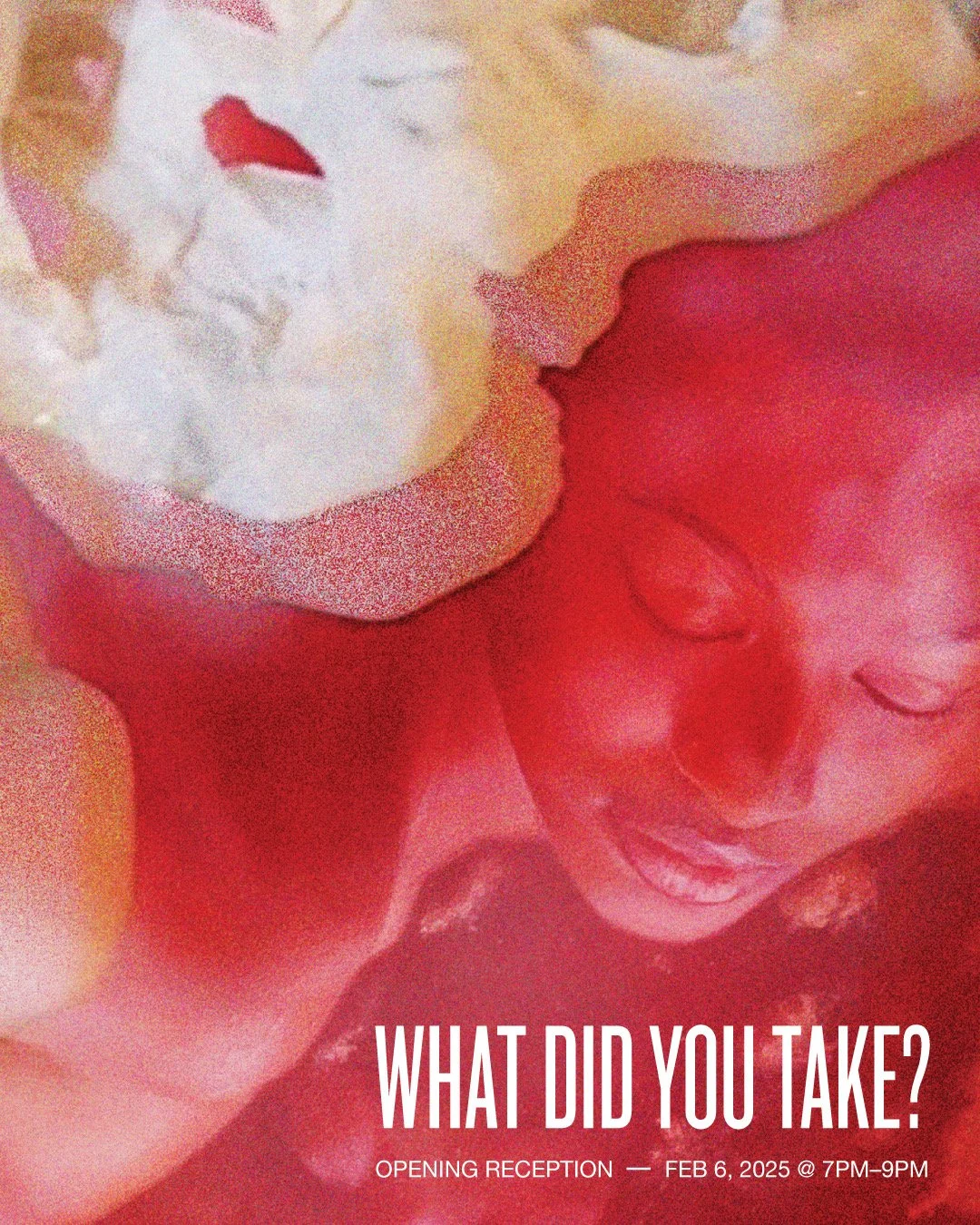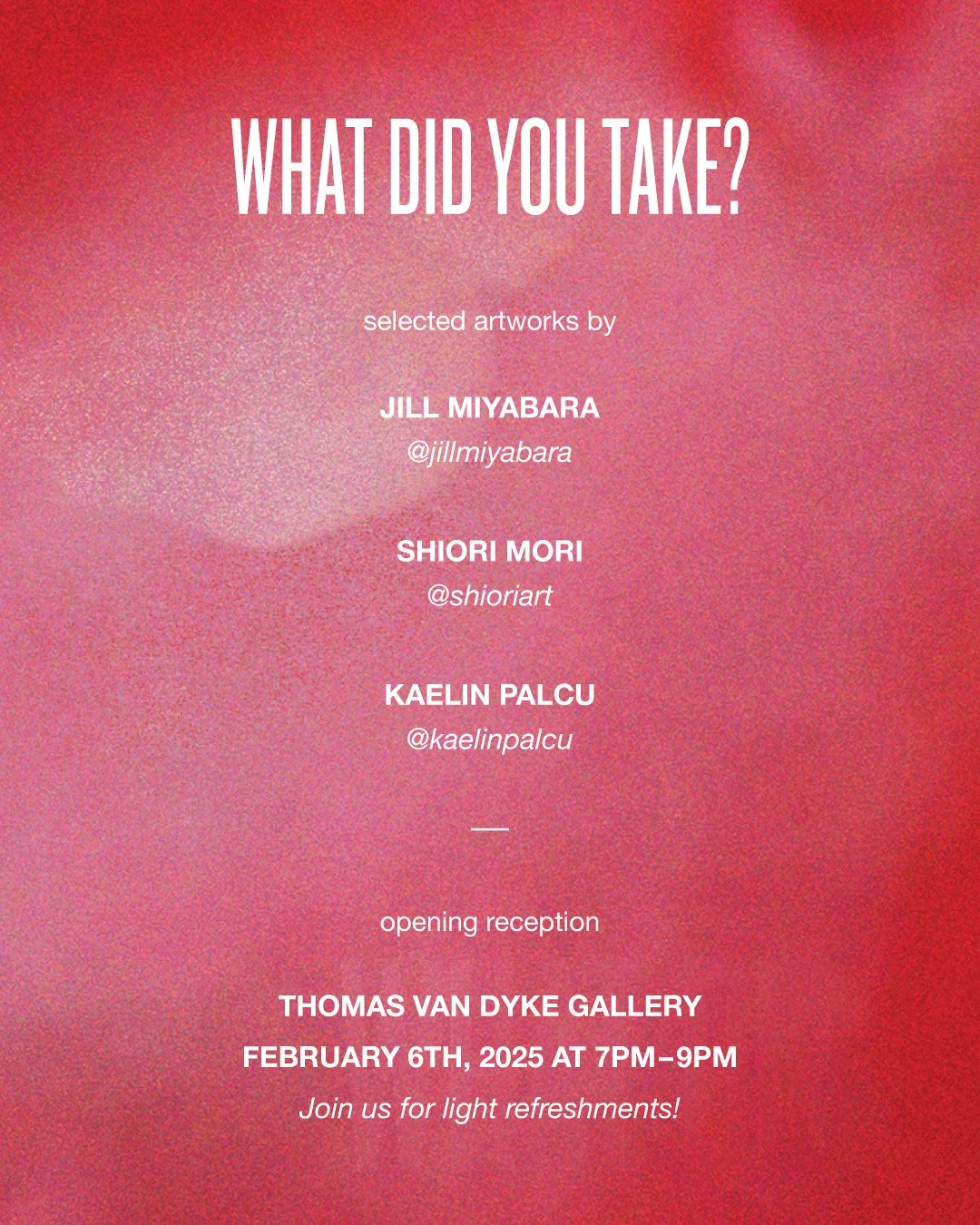Now on view
What Did You Take?
Jill Miyabara
Shiori Mori
Kaelin Palcu
Thomas VanDyke Gallery is very pleased to present What Did You Take?, a collaborative exhibition by artists Jill Miyabara, Shiori Mori, and Kaelin Palcu. Having met during their studies at the Florence Academy of Art and later reconnecting in New York, they found themselves engaging in the same dialogue both personally and professionally. This show is meant to function as an active inquiry, examining what’s been taken, stripped, wanting to understand how to rebuild, how to find sanctuary, how to grow into something bigger, how to claim agency while accepting the consequences for the moral ambiguity that often occurs as a result of the claiming. What will it take to articulate their work so it’s embraced, what will people take away from the experience of viewing it? The works in this show are a mediation on these questions and an invitation, a conduit for curiosity.
Jill Miyabara (b.1993), is a sculptor of Chinese, Japanese, and American heritage whose work bridges traditional and digital mediums. Born in China and raised in Washington DC, Miyabara's artistic journey began with 3D animation studies at MICA where she discovered clay and sculpting the figure from life. Driven by a desire for a more tactile connection to sculpture, she pursued academic figurative sculpture at the Florence Academy of Art. This blend of digital and classical training has enabled Miyabara to develop a distinct approach, merging digital and physical sculpture in her artistic practice.
Miyabara's work delves into the experience of dehumanization. Assault can lead to feeling stripped of agency, powerlessness and being reduced to "just a body." Each sculpture in this installation is emblematic of a woman familiar with this, the complete erasure of identity and the irrecoverable loss resulting from it.
The work, titled Bigger Than I Want to Be, aims to communicate both harm and a path to healing. What was lost as a byproduct of violence can perhaps never be recovered. But one can shape-shift, turn into something new by connecting to those who have shared this experience. The solace, from Miyabara’s perspective, is in transforming into something bigger, in spite of what’s been taken.
Shiori Mori (b.1998) is a Japanese-American painter based in New York City. She began her BFA at Pratt Institute, where she discovered representational figurative painting. Her passion for the subject guided her to Italy and the Florence Academy of Art, where she immersed herself in the art of drawing and painting the figure from life.
Mori’s works explore spaces of personal refuge, emphasizing the freedom and comfort she finds within her chosen community and the reasons these places hold such significant importance. Her paintings seek to dissolve barriers between herself and the subjects; a shared experience of creative expression. Mori’s material handling and sensitivity to interpreting form, is an ode, a talisman of respect to the individuals she represents and the emotional investment she imbues in each painting.
In her practice, Mori treats the human form not as an object of desire, but as a conduit for raw emotion and unguarded expression. Her work acknowledges that to be witnessed in one's most vulnerable state requires a certain amount of trust and mutual respect. This truth is evident in her painting Shield, where the subject's pose suggests both protection and surrender, navigating the tension between guarding oneself and allowing oneself to be truly seen.
For Mori, classically trained as a dancer, movement and the relationships fostered through dance are an essential complementary outlet for her practice as a painter. She captures the freedom and solace she finds in movement between herself and other dancers, as well as the physical and emotional bond they have built through their shared artistic expression. This has enriched and influenced her current visual language, apparent in the subject and environment of her painting Unraveling.
Kaelin Palcu (b. 1994), lives and works in Brooklyn, New York. The nature of her fathers career was such that her family was relocated every few years, making her life one of constant transience. Creativity has been her only constant; a way to understand people, herself and make sense of what was happening around her. Palcu’s creative inclinations guided her to a BFA in Sculpture and Installation, where she discovered bronze casting, sculpture and drawing, bsessions that eventually led her to the Florence, Barcelona and New York Academies of Art.
Palcu’s series Anatomy of a Poor Decision examines the consequences of succumbing to longing and finding freedom and catharsis in situations of moral ambiguity. Through this series, Palcu invites viewers to reflect on the strange exchanges that occur in the presence of desire, examining the roles of right and wrong in the pursuit of self-discovery and connection.
Palau’s use of color, distortion, and space is emblematic of a dreamscape. Palcu aims to envelop viewers, inviting them into a place both somatic and ephemeral, depicting an impression, a watermark of experience.
